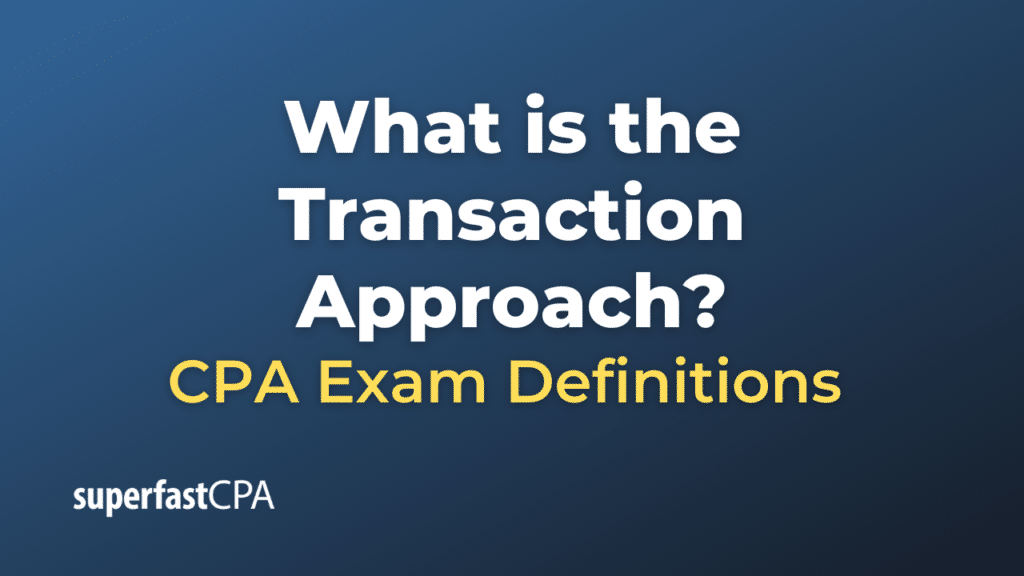Transaction Approach
The transaction approach is a method used in accounting to record and recognize financial events. Rather than focusing on the periods in which cash is received or paid, the transaction approach records financial events when they occur, regardless of the cash flow timing. This concept aligns with the accrual basis of accounting, where revenues are recognized when earned and expenses are recognized when incurred, irrespective of the actual cash movement.
Key characteristics and examples of the transaction approach include:
- Revenue Recognition: Revenue is recognized when it’s earned, not necessarily when the cash is received. For instance, if a company sells a product on credit, it records the sale and accounts receivable at the time of the sale, even if it will receive the cash in the future.
- Expense Recognition: Expenses are recognized when they’re incurred. If a company receives goods or services on credit, it records the expense and accounts payable at that time, regardless of when the payment will be made.
- Adjusting Entries: At the end of a reporting period, adjusting entries are made to recognize revenues and expenses that have been earned or incurred but not yet recorded.
- Comprehensive View: The transaction approach gives a more comprehensive view of a company’s financial performance and position for a particular period, capturing all economic events that have taken place.
Example of the Transaction Approach
Let’s walk through a detailed scenario to illustrate the transaction approach in practice.
Scenario: Stellar Events Company
January:
- On January 5, Stellar Events signs a contract to organize a corporate event for a client. The total contract value is $10,000.
- On January 15, they pay $2,000 upfront for a venue booking for the event.
- By January 30, Stellar completes the event.
February:
- On February 10, the client pays Stellar Events $5,000 as a partial payment.
- On February 20, Stellar pays $1,000 to a catering company for the food and drinks provided during the event.
March:
- On March 5, the client settles the remaining $5,000.
Using the transaction approach, here’s how these events would be recorded:
- January 5: No immediate revenue recognition since the event hasn’t taken place yet. However, the company might note the contract’s existence and potential future revenue.
- January 15:
- Expense recognition of $2,000 for the venue booking, irrespective of the cash payment.
- Decrease in cash or bank account by $2,000.
- January 30:
- Revenue recognition of $10,000 since the service (the event) has been completed, even though no cash has been received from the client.
- An accounts receivable of $10,000 would be recorded.
- February 10:
- Decrease in accounts receivable by $5,000.
- Increase in cash or bank account by $5,000.
- February 20:
- Expense recognition of $1,000 for the catering service, irrespective of the cash payment.
- Decrease in cash or bank account by $1,000.
- March 5:
- Decrease in accounts receivable by $5,000.
- Increase in cash or bank account by $5,000.
Summary:
By the end of January, using the transaction approach:
- Stellar Events would show a revenue of $10,000 (because the event was completed).
- Expenses of $2,000 (venue booking) would be recognized.
- Accounts receivable would be at $10,000, and cash would be reduced by $2,000.
By the end of February, the accounts receivable would decrease by $5,000, cash would increase by $5,000 (from client payment) and decrease by $1,000 (from catering payment), and an additional expense of $1,000 would be recognized.
By the end of March, the accounts receivable would decrease by the remaining $5,000, and cash would increase by the same amount.
Throughout this process, the transaction approach allowed Stellar Events to recognize revenue and expenses as they occurred, regardless of when the actual cash was received or paid.













